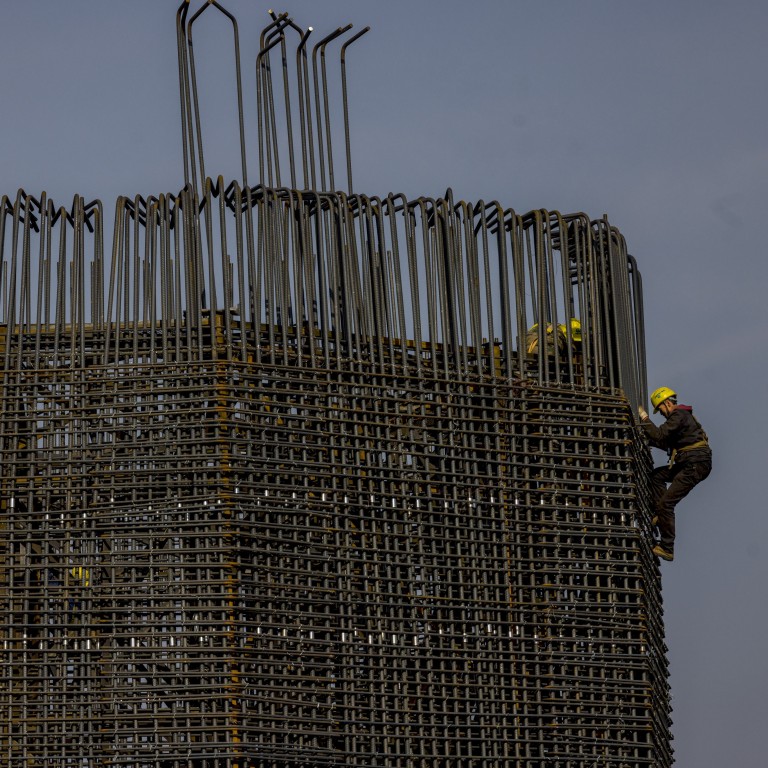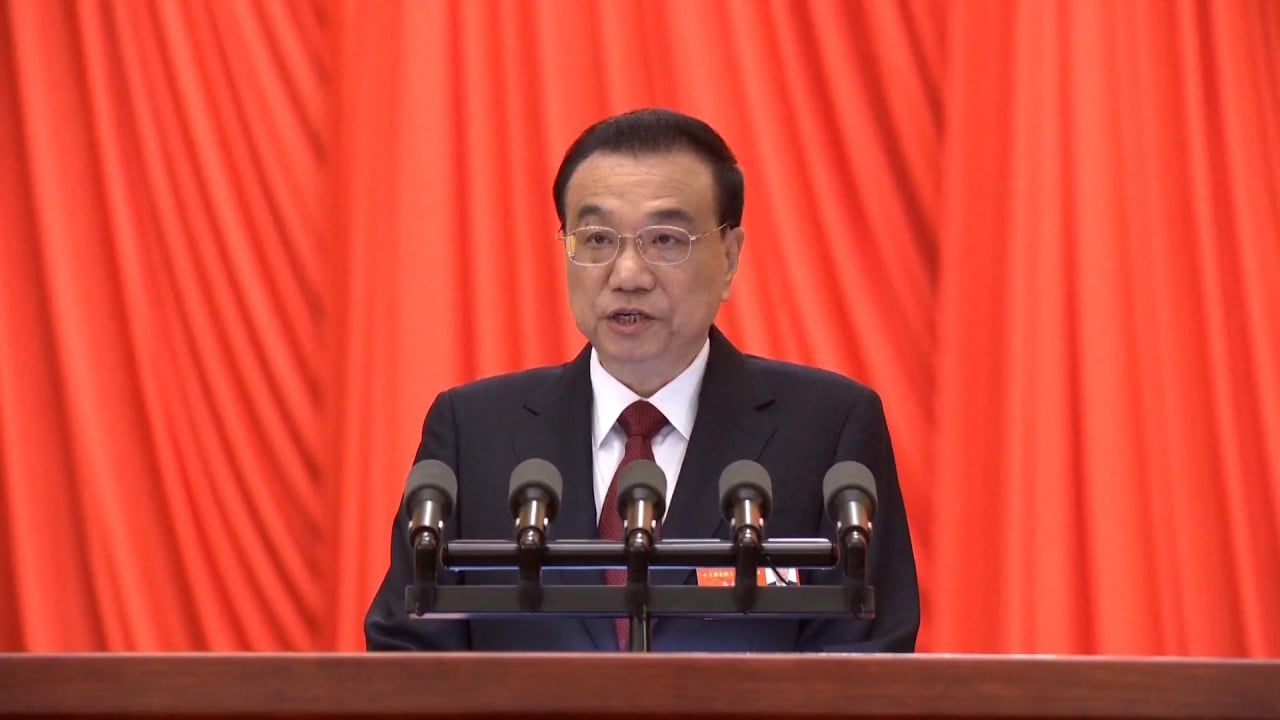
China debt: is Beijing using a ‘shadow stimulus’ to shore up flagging economic growth?
- Analysts say Beijing is turning to local government borrowing and regional banks to shore up growth, rather than conventional fiscal and monetary policy
- But Beijing’s zero-Covid target – which relies on lockdowns, mass testing and quarantines – is putting enormous pressure on regional finances
As China doubles down on its drive to eliminate the coronavirus, it is increasingly relying on local governments to shore up growth amid deteriorating financing conditions for regional economies.
Several international institutions have already reduced growth estimates to below Beijing’s target. Last month, the International Institute of Finance on Tuesday revised down its 2022 growth forecast for China to 3.5 per cent from 5.1 per cent, citing virus restrictions that have weighed substantially on growth.
The International Monetary Fund last month also cut China’s GDP growth estimate for 2022 from 4.8 per cent in January to 4.4 per cent.
Andrew Collier, managing director of Orient Capital Research, believes Beijing is in favour of a “shadow stimulus” via local government borrowing and regional bank loans to shore up growth, rather than conventional fiscal and monetary expansion.
“That’s precisely the question that we – and Beijing – are struggling with. So far, they’ve been toughing it out by not providing a big stimulus,” he said.
Collier said a shadow stimulus meant the central government could avoid increasing debt, while allowing the central bank and state banks to keep their balance sheets clean.
“The stimulus is pushed down to lower levels, where the messy politics of excess leverage, default, and unemployment can be fought – town by town,” he said.
‘No income, so what’s the point of a tax cut?’: China’s firms bemoan support
Unlike in 2020 during the initial outbreak, the central government has not yet allocated additional money to help local governments. That year China sold 1 trillion yuan (US$150 billion) worth of treasury bonds to cover economic stimulus to combat the pandemic.
However, Beijing at its annual parliamentary meetings in March pledged to top up direct payment transfers to local governments to 9.8 trillion yuan this year.
China’s leaders are confident the annual GDP target can be met while maintaining the zero-Covid strategy.
But many local governments have had to boost spending to keep in step with the hardline policy.
China’s financial hub Shanghai, which has been in lockdown for over a month, has said it would offer tax refunds and rental subsidies of up to 140 billion yuan to support businesses.
The Fujian provincial government said in March it had allocated 18.86 million yuan to build three quarantine facilities in the cities of Fuzhou and Quanzhou, the latter of which also received another 300 million yuan from provincial authorities for mass testing and the purchase of Covid-control equipment.
With no signs of the outbreak ending, there are doubts whether local governments can meet their own economic growth targets without additional resources.
Beijing has pledged to speed up infrastructure spending to steady the economy, but it is also wary of growing debt.
LGFVs have become the go-to financing platforms for construction in regional economies, but have contributed to China’s so-called hidden debt problem due to a lack of transparency.
In mid-April, however, the People’s Bank of China (PBOC) issued 23 measures to shore up the economy, which included one that stated banks should support “the reasonable financing demands” of LGFVs.
Larry Hu, chief China economist at Macquarie Capital, said the PBOC’s comments were “quite unusual” because a deleveraging campaign has been under way since 2018. The debt reduction drive put a limit on local governments’ ability to access credit from informal funding channels, a practice known as shadow banking.
How big is China’s hidden debt problem, and what is Beijing doing about it?
“But it’s far from enough, since local governments are having other constraints in leveraging up,” Hu said.
Economic recovery in Shanghai, one of China’s major growth engines, now hinges on how long the lockdown will be in place.
“If Shanghai continues to tolerate a deficit ratio of more than 30 per cent for the next two to three years or if it leverages key state-owned enterprises for extensive capital expenditure, it risks incurring a very high debt ratio, which could well exceed 240 per cent,” Susan Chu, an analyst at S&P Global Ratings, said in a note on April 25.
“This scenario, however, appears remote as the Shanghai government operates in an institutional framework under the tightening control of the central government.”
Analysts are increasingly bearish about China’s economic outlook, even if cities like Shanghai can recover quickly from restrictions.
Yes, bailouts will occur, both of LGFVs and of local governments, but not to the extent that will be required
“The Politburo meeting last week, though, has clearly stepped up the pitch of a bigger infrastructure stimulus coming for the rest of the year,” said Natixis in a research note on Thursday.
“While clearly warranted, we wonder whether infrastructure investment can really grow fast enough in the remainder of the year to reach the 5.5 per cent growth target anyway.”
Collier said Beijing would consider bailing out local governments if they go under, but it would be highly selective, likening their fate to Guangdong-based developer Evergrande, which has been struggling with debt repayment after a crackdown by regulators over its hefty borrowing.
“Yes, bailouts will occur, both of LGFVs and of local governments, but not to the extent that will be required,” he said. “Look at the property market. Evergrande is a near default and many smaller developers have gone under. Has the government saved them?
“LGFVs are somewhat different, since they are partly government owned, but Beijing still views them as private companies.”



